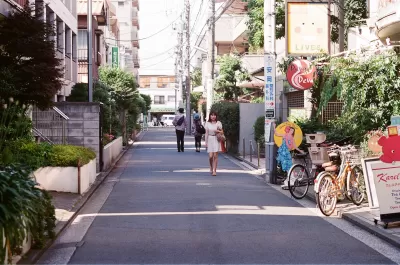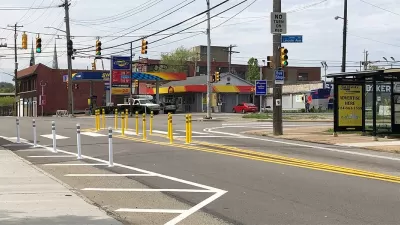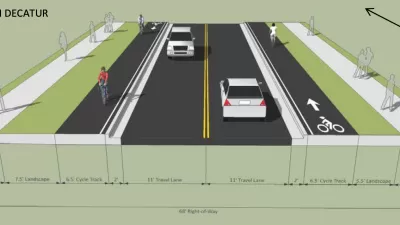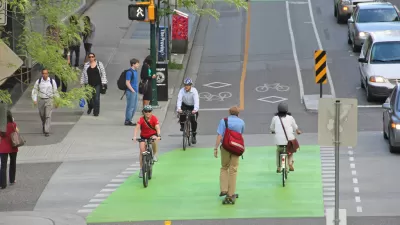Whether driveways are anti-urban or 'anti-pedestrian' depends on how we segregate street uses. As shared spaces where they cross sidewalks, driveways inform the wider question: what makes for a good street?

Are driveways anti-urban? That claim makes sense in North America, where pedestrian and vehicle street spaces are seen as mutually exclusive. The driveway, by definition, breaches a divide by allowing cars to cross the sidewalk. The result is often a series of pedestrian-unfriendly curb cuts, where the sidewalk dips to let cars ascend the curb.
The question then becomes: why have a raised curb at all? Historically, curbs provided a space for walkers away from street filth. But now, "with universal street paving, the replacement of beasts of burden by motor vehicles and rainwater collection systems, the reasons for the curb's existence don't seem all that significant."
The article gives examples of how smaller Japanese streets forgo the curb in favor of shared space for pedestrians, motorists, and cyclists. And on larger streets with high-speed vehicle traffic, physical barriers like trees and poles do a better job keeping cars from sidewalks.
In driveways' defense, the article notes that they can use space more efficiently than roadside parking, clearing the way for features like bike lanes.
FULL STORY: Sidewalks and driveways: is it time to throw the curb to the curb?

Planetizen Federal Action Tracker
A weekly monitor of how Trump’s orders and actions are impacting planners and planning in America.

Restaurant Patios Were a Pandemic Win — Why Were They so Hard to Keep?
Social distancing requirements and changes in travel patterns prompted cities to pilot new uses for street and sidewalk space. Then it got complicated.

Map: Where Senate Republicans Want to Sell Your Public Lands
For public land advocates, the Senate Republicans’ proposal to sell millions of acres of public land in the West is “the biggest fight of their careers.”

Maui's Vacation Rental Debate Turns Ugly
Verbal attacks, misinformation campaigns and fistfights plague a high-stakes debate to convert thousands of vacation rentals into long-term housing.

San Francisco Suspends Traffic Calming Amidst Record Deaths
Citing “a challenging fiscal landscape,” the city will cease the program on the heels of 42 traffic deaths, including 24 pedestrians.

California Homeless Arrests, Citations Spike After Ruling
An investigation reveals that anti-homeless actions increased up to 500% after Grants Pass v. Johnson — even in cities claiming no policy change.
Urban Design for Planners 1: Software Tools
This six-course series explores essential urban design concepts using open source software and equips planners with the tools they need to participate fully in the urban design process.
Planning for Universal Design
Learn the tools for implementing Universal Design in planning regulations.
Heyer Gruel & Associates PA
JM Goldson LLC
Custer County Colorado
City of Camden Redevelopment Agency
City of Astoria
Transportation Research & Education Center (TREC) at Portland State University
Camden Redevelopment Agency
City of Claremont
Municipality of Princeton (NJ)





























